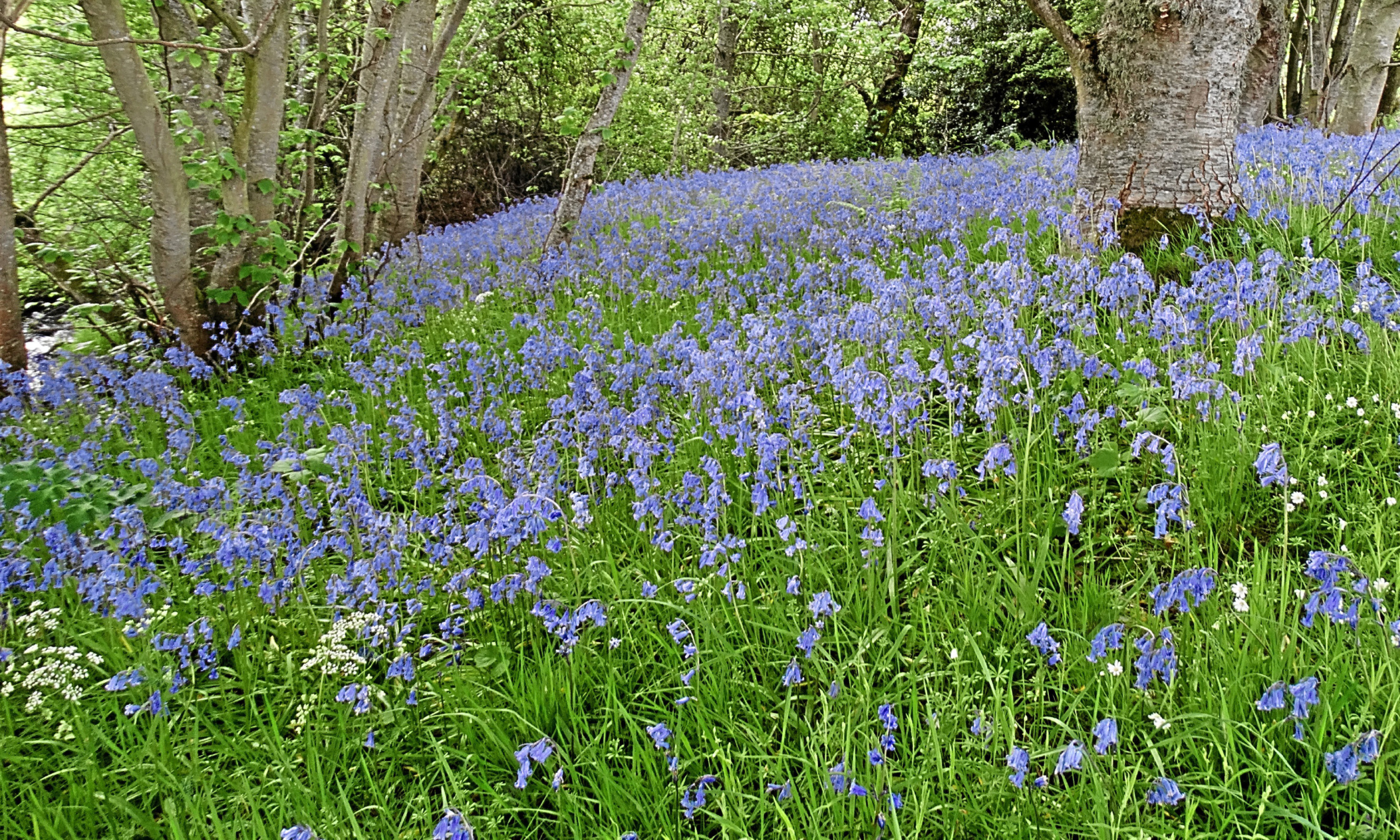I’ve long maintained that May and September are the months to see Scotland at its best, and the Doyenne and I got a taste of the best last weekend.
We were back in the Black Isle visiting son Robert and his family.
The sky was overcast when we left home but it brightened as we crossed over Cairn o’ Mount and got better and better as we drove through Donside and left the Lecht Summit behind us.
Robert greeted us in shorts and flip-flops wondering what we were doing in our winter clothes.
Inka and the two resident dogs always settle down together very amicably.
Porage and Tiggy greet me enthusiastically whenever we arrive and sit expectantly at the tailgate of the car, hoping to jump in, as I am associated with more walks.
Garden birdlife
Their garden is a true wildlife haven – part wild, part cultivated, woodland and woodland undergrowth, and a pond.
A clearfell strip on two sides has naturally regenerated with alder, birch, gean, hawthorn, sycamore and other scrub trees providing ideal cover for wildlife.
The range of birds visiting the garden is impressive, including siskins, blue tit, great tit, coal tit, goldfinch, chaffinch, woodpecker, dunnock, wrens – daughter-in-law Katie counted 11 wrens on the back green one morning – robin, heron, mallard, pheasant and red kites wheeling overhead.
Redpolls come in from time to time to feed with the other finches.
I hope that one day I shall be visiting when they come visiting too, for I’ve never seen one in the flesh.
The further we drove the more intense the colours became.
I had thought our local whins and broom were looking particularly well but the Black Isle was positively singing with colour.
The roadsides and whole hillsides glowed with the golden flowers.
The whins had been trimmed on some fields and shaped to provide natural stock-proof fences.
We had a discussion with grand-daughter Cecily whether the whin blossom smelt of coconut, as she favoured, or almonds as I favoured.
I’m not sure that my opinions received the deference that I might have hoped for!
Blue on yellow
I’ve written before how blue complements yellow in nature.
Along the roadside verges and in the woodland margins are cascades of bluebells – looking as good as I’ve seen them, and what pleasure they give.
Sunday was one of those May days I mentioned at the start; which was lucky because we had decided to have a family day out.
The Black Isle is situated on the neck of Scotland and I forget how close it is to the west coast and how easily you can drive there.
We headed out on the A832 to Garve and on to Achnasheen, branching off to the left on the A890, down Glen Carron. The sun shone and the spring colours sparkled.
At Loch Carron the A890 becomes the A896.
The excellent Seafood Bar at Kishorn was our destination for lunch.
It was a first time for the Doyenne and me and it’s everything its reputation says it is – fresh, locally-sourced seafood, simply cooked and presented. You can’t get better.
On then to Shieldaig – it was becoming a nostalgia trip for the Doyenne and me.
We sat on the shore and drank coffee and sunbathed.
The temperature was 20°C plus and it was too early in the season, thankfully, for the dreaded Highland midges.
From Shieldaig it’s 20 miles to Kinlochewe through Glen Torridon, dominated by the desolate and dramatic Torridon Hills, the oldest sedimentary rocks in the British Isles.
The rocky peaks are bare of vegetation, creating a lonely moonscape.
Fishy story
At Kinlochewe the massif of Beinn Eighe towers over Loch Maree, considered one of, if not the most, beautiful of our Highland lochs.
It’s memorable for the Doyenne, for it was on the loch she caught her first salmon.
The heat was going out of the sun and we turned east back towards the Achnasheen junction.
Robert had planned a supper of homemade pizzas cooked in their garden pizza oven.
With a glass of wine in the hand it was a perfect end to the day.
Back home on Monday. Tuesday was a clear blue day – windy but, once you got shelter from it, the sun was hot.
I took Inka for a walk round the boundaries of the local woods, then followed a track between fields of spring barley and came home along the margins of a grass field. The grass has grown rapidly in the last fortnight and I expect will likely soon be cut for silage.
Hunting house martins swooped over the rolling green catspaws whipped up by the gusty wind.
Readers may be surprised to learn that, under the Scottish Countryside Access Code, growing grass is a crop that should be treated like any other growing crop.
The code recommends that once the grass is above ankle height walkers should keep to the field margins to avoid damage.
For practical month-by-month advice on your rights and responsibilities under the Scottish Outdoor Access Code, which should be essential reading for all country lovers and walkers, visit outdooraccess-scotland. com.


